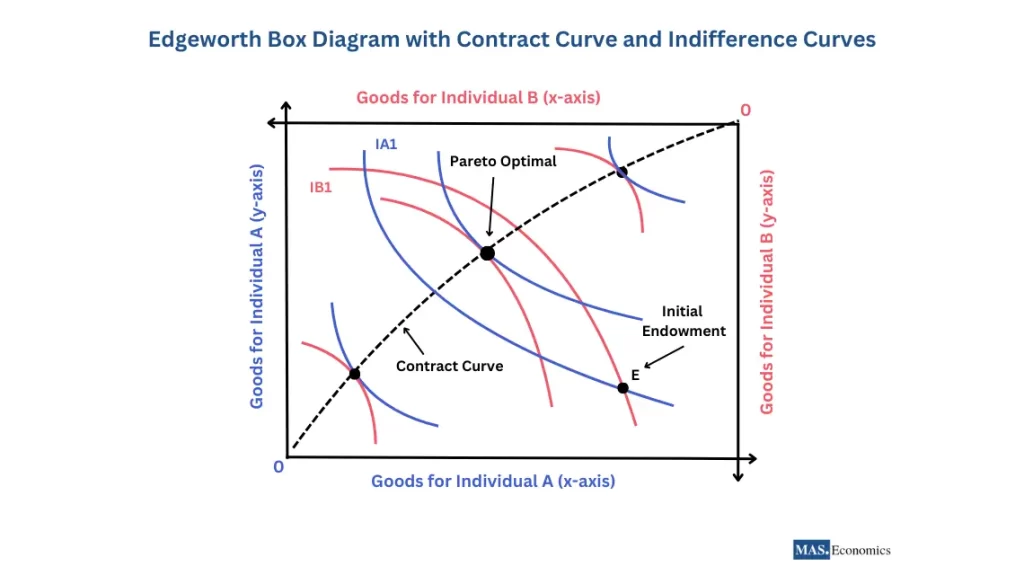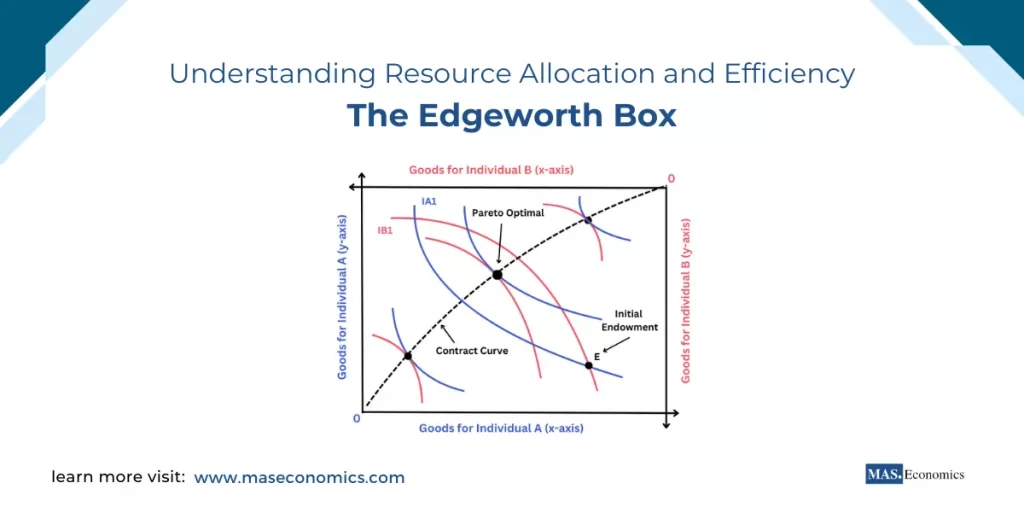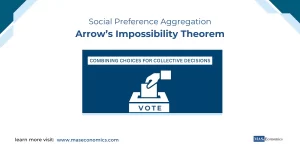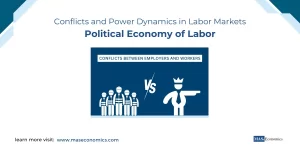Microeconomics often uses visual models to understand the complexities of resource allocation, especially in scenarios involving multiple agents with competing interests. One of the most valuable tools for analyzing such exchange economies is the Edgeworth box. This model offers insights into how resources are distributed and illustrates the conditions needed for market efficiency and optimal resource allocation. The Edgeworth box concept, its theoretical basis, and its role in microeconomic analysis reveal important dynamics of market behavior.
What Is the Edgeworth Box?
The Edgeworth box is a conceptual tool used to model an exchange economy involving two goods and two individuals. Essentially, it is a diagram that represents all possible distributions of two goods between two individuals. The Edgeworth box is particularly useful in understanding how individuals with different initial endowments and preferences can reach mutually beneficial trades that lead to an efficient allocation of resources.
In its simplest form, the Edgeworth box depicts:
Initial Endowments
These represent the quantities of each good that each individual starts with. Each point within the box represents a possible allocation of the two goods between the two individuals.
Indifference Curves
Each individual’s preferences are represented by curves that show combinations of goods that provide the same level of satisfaction, or utility.
Feasible Allocations
Every point within the box represents a feasible allocation where the total quantities of each good remain constant, but they are distributed in different ways between the two individuals.
Edgeworth Box Diagram
To better understand these concepts, let’s take a look at the Edgeworth box diagram below:

In the diagram, you can see:
Initial Endowment (E): This is the starting allocation of goods between Individual A and Individual B. It is where the analysis begins and reflects each individual’s original holding.
Indifference Curves (IA1, IB1): These curves represent the levels of utility for each individual. Points on the same indifference curve provide the same level of satisfaction to the respective individual. Notice that each person’s indifference curve bends inward, highlighting the desire for a balanced allocation.
Contract Curve: This is the dotted line connecting points of tangency between Individual A’s and Individual B’s indifference curves. It shows all possible Pareto efficient allocations where no further mutually beneficial trades are possible.
The Exchange Economy
The Edgeworth box is used to model what is known as an exchange economy, where there are no production activities and all goods are divisible. Each individual in the exchange economy has an initial allocation of goods, and the main question is how these goods can be reallocated to improve both individuals’ well-being.
In the model:
Individuals start with an initial endowment—a specific quantity of each good.
The individuals then engage in voluntary trade, seeking to achieve higher utility by exchanging parts of their initial endowment.
The concept of Pareto efficiency is central here: an allocation is said to be Pareto efficient if there is no other allocation that can make at least one individual better off without making the other worse off.
Understanding Allocations and Pareto Efficiency
Allocations in the Edgeworth box represent specific ways in which the available goods are distributed between the two individuals. Every point in the box corresponds to a unique allocation, where each individual has some quantity of both goods.
The goal of using an Edgeworth box is to determine the Pareto efficient allocations—those allocations where neither individual can improve their position without harming the other. The line formed by all such efficient allocations is known as the contract curve, which is visible in the diagram above.
The Contract Curve
The contract curve is the set of all Pareto efficient allocations. Along this curve, both individuals are maximizing their utility given the preferences of the other, and no further mutually beneficial trades are possible. The points on the contract curve represent the best possible outcomes for both individuals, considering their preferences and initial endowments.
Initial Endowments and Trading Possibilities
Each individual starts with an initial endowment, which is represented as a point in the Edgeworth box (shown as E in the diagram). From this point, individuals can engage in trading to improve their respective utilities. These trades are feasible if they are voluntary, meaning that both individuals must be made better off as a result of the trade.
The key insight from the Edgeworth box is that starting from an initial allocation, individuals can move along their indifference curves through trade to reach a point where both are better off. The movement stops once they reach the contract curve, where further gains from trade are no longer possible.
Competitive Equilibrium in the Edgeworth Box
A crucial concept tied to the Edgeworth box is the idea of competitive equilibrium. In a competitive equilibrium, each individual maximizes their utility given the prices of goods, and the market clears—meaning that the total amount of each good demanded equals the total amount supplied.
In the context of the Edgeworth box:
A competitive equilibrium occurs where an individual’s budget constraint, which represents the maximum set of goods they can afford, is tangent to their indifference curve.
At this point of tangency, both individuals’ indifference curves are also tangent to each other, indicating that no further mutually beneficial trades are possible.
The price ratio between the goods at this equilibrium is the market price, and the corresponding allocation of goods is Pareto efficient.
Conclusion
The Edgeworth box is a foundational tool that provides insights into how agents allocate resources, trade for mutual gains, and achieve efficient outcomes. By modeling an exchange economy, it illustrates the journey from initial endowments to efficient allocations and the role of competitive equilibrium in achieving market efficiency.
From international trade to household decision-making, the Edgeworth box visualizes the potential for beneficial exchanges and highlights the conditions for optimal outcomes. It serves as a valuable bridge between theoretical concepts and practical understanding.
FAQs:
What is the Edgeworth box?
The Edgeworth box is a graphical tool used in microeconomics to analyze how two individuals allocate two goods between themselves, considering their preferences and initial endowments. It highlights the conditions for mutually beneficial trade and efficient outcomes.
What does the initial endowment represent?
The initial endowment is the starting allocation of goods each individual possesses before any trading occurs. It serves as the baseline point for analysis in the Edgeworth box.
What are indifference curves in the Edgeworth box?
Indifference curves represent combinations of goods that provide the same level of utility to an individual. These curves help visualize preferences and the trade-offs individuals are willing to make.
What is Pareto efficiency in the context of the Edgeworth box?
An allocation is Pareto efficient if no individual can be made better off without making the other worse off. The contract curve within the Edgeworth box connects all Pareto efficient allocations.
What is the contract curve?
The contract curve is the set of all Pareto efficient allocations where both individuals maximize their utility, and no further mutually beneficial trades are possible.
How does trade occur in the Edgeworth box?
Trade occurs when individuals move from their initial endowment toward a point on the contract curve. These trades are voluntary and improve both individuals’ utilities until no further gains are possible.
What is a competitive equilibrium in the Edgeworth box?
A competitive equilibrium occurs when both individuals maximize their utility given market prices, and the allocation is Pareto efficient. At this point, the indifference curves of both individuals are tangent, reflecting no further gains from trade.
Why is the Edgeworth box important?
The Edgeworth box provides insights into resource allocation, trade, and efficiency. It demonstrates how individuals can achieve mutually beneficial outcomes and help explain the conditions for market efficiency in an exchange economy.
Thanks for reading! Share this with friends and spread the knowledge if you found it helpful.
Happy learning with MASEconomics




